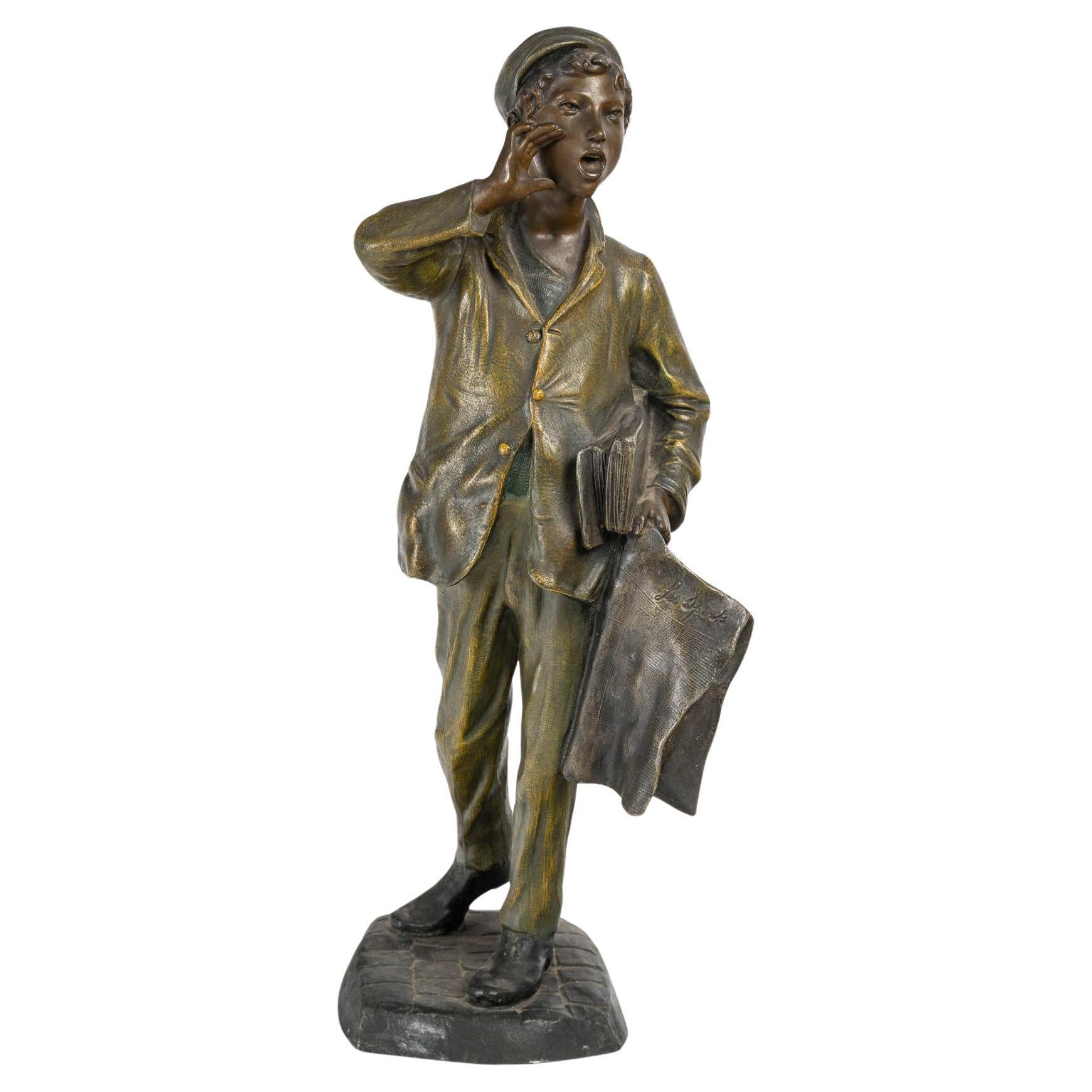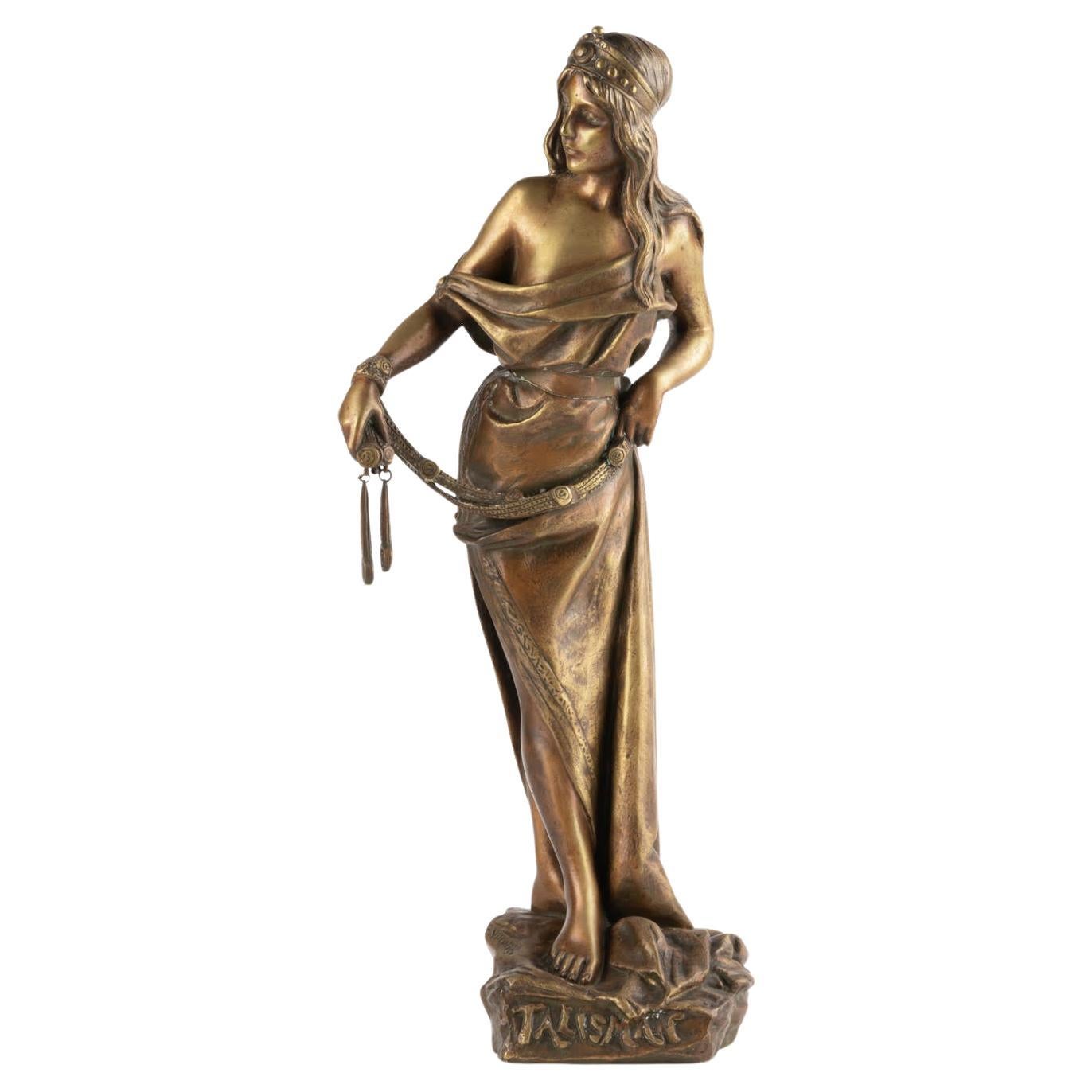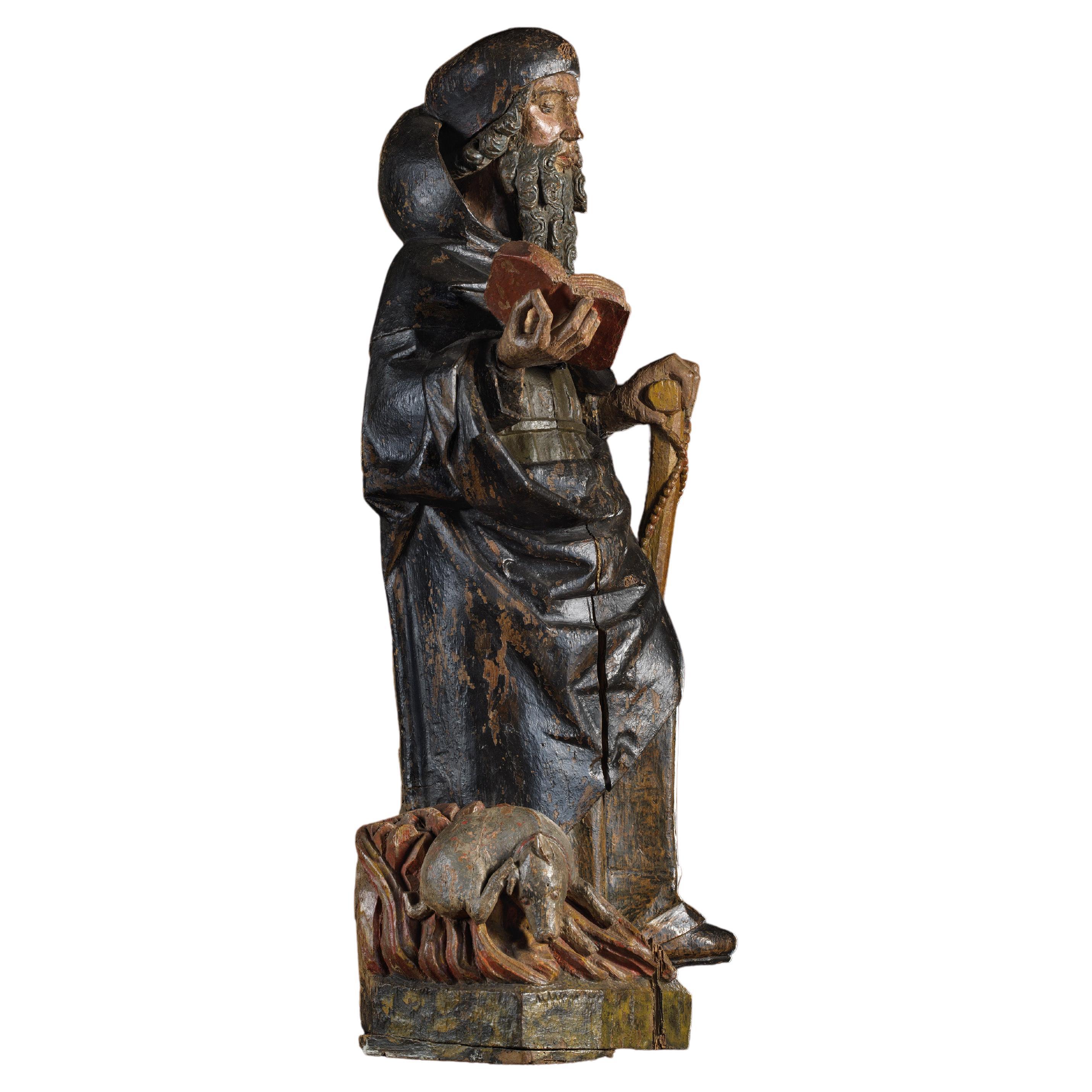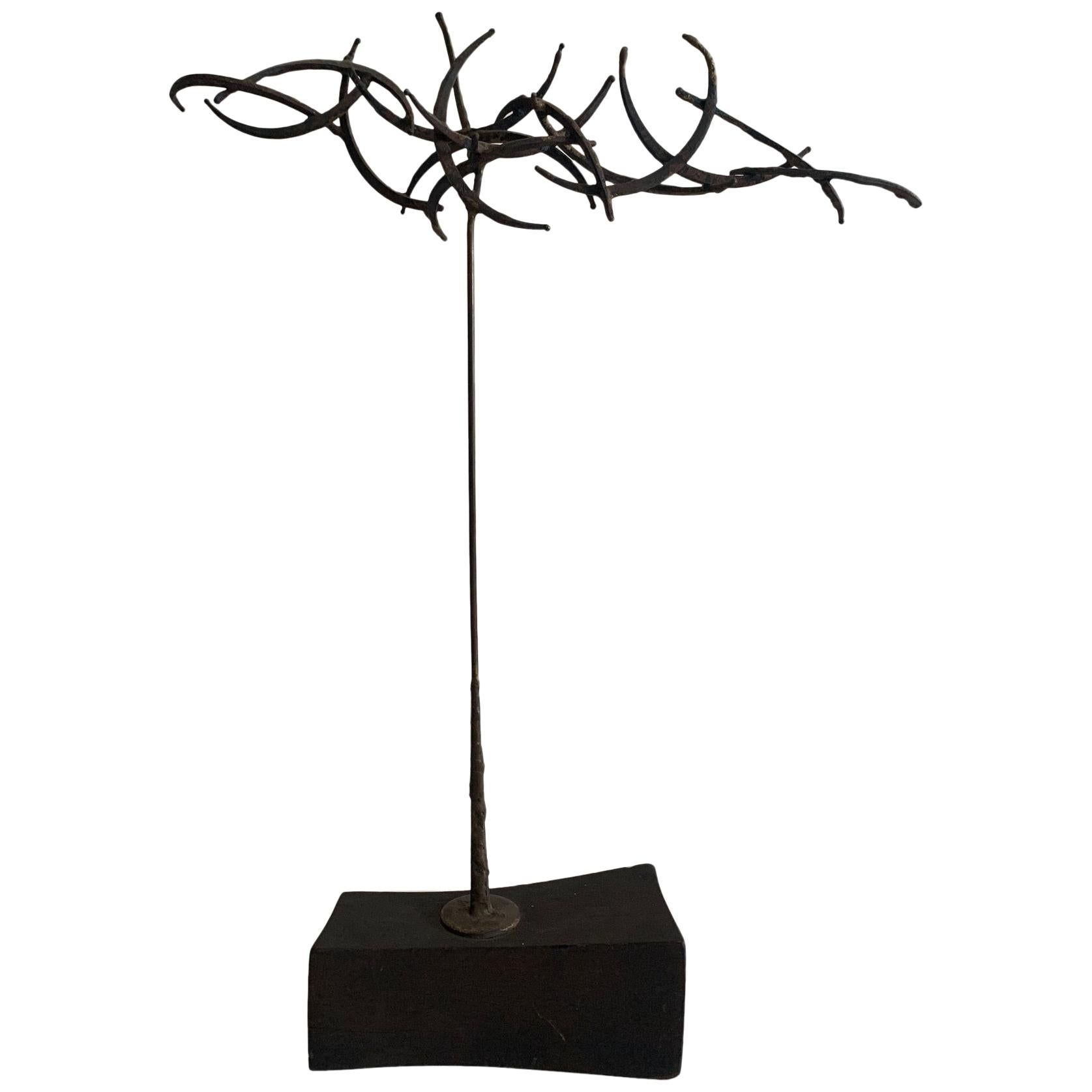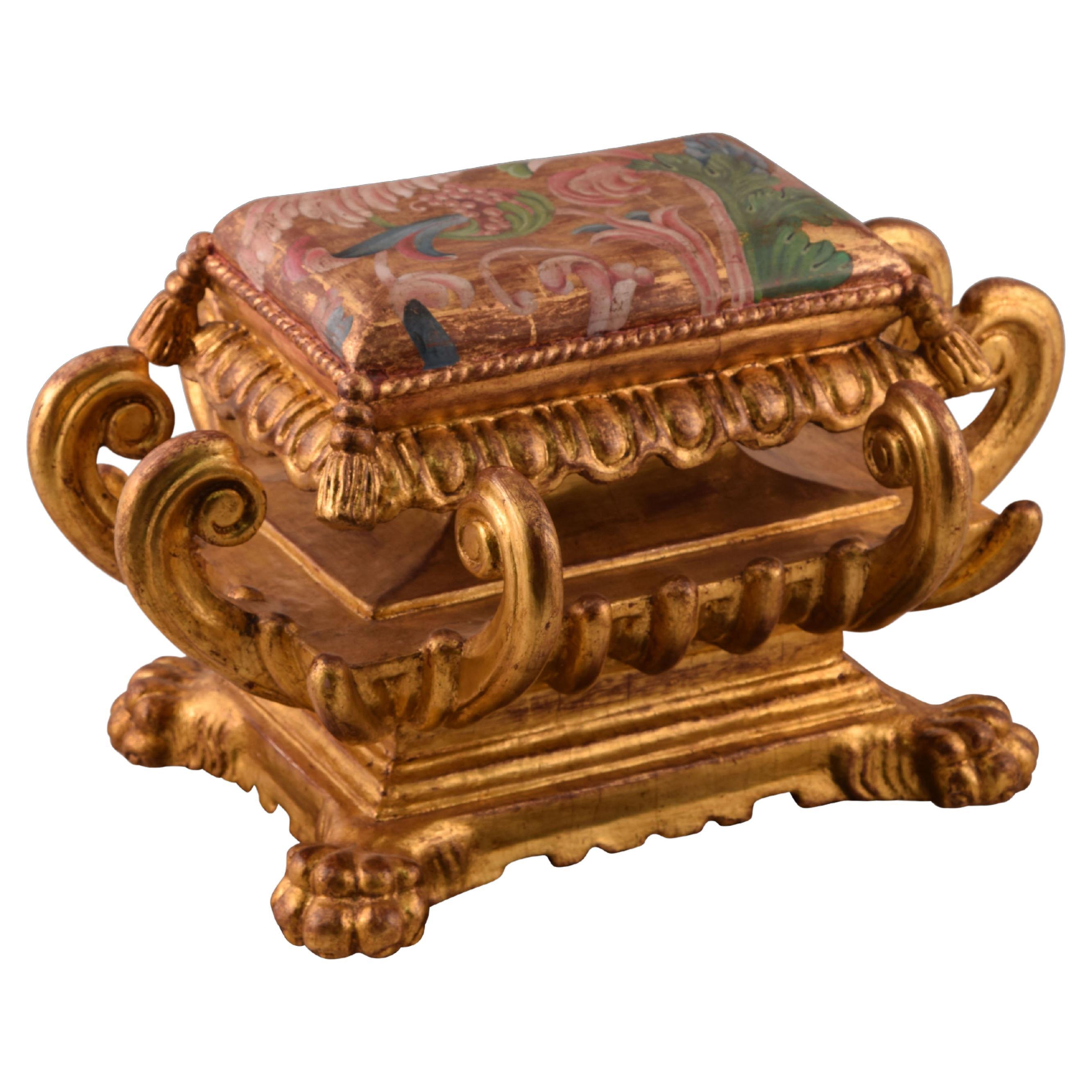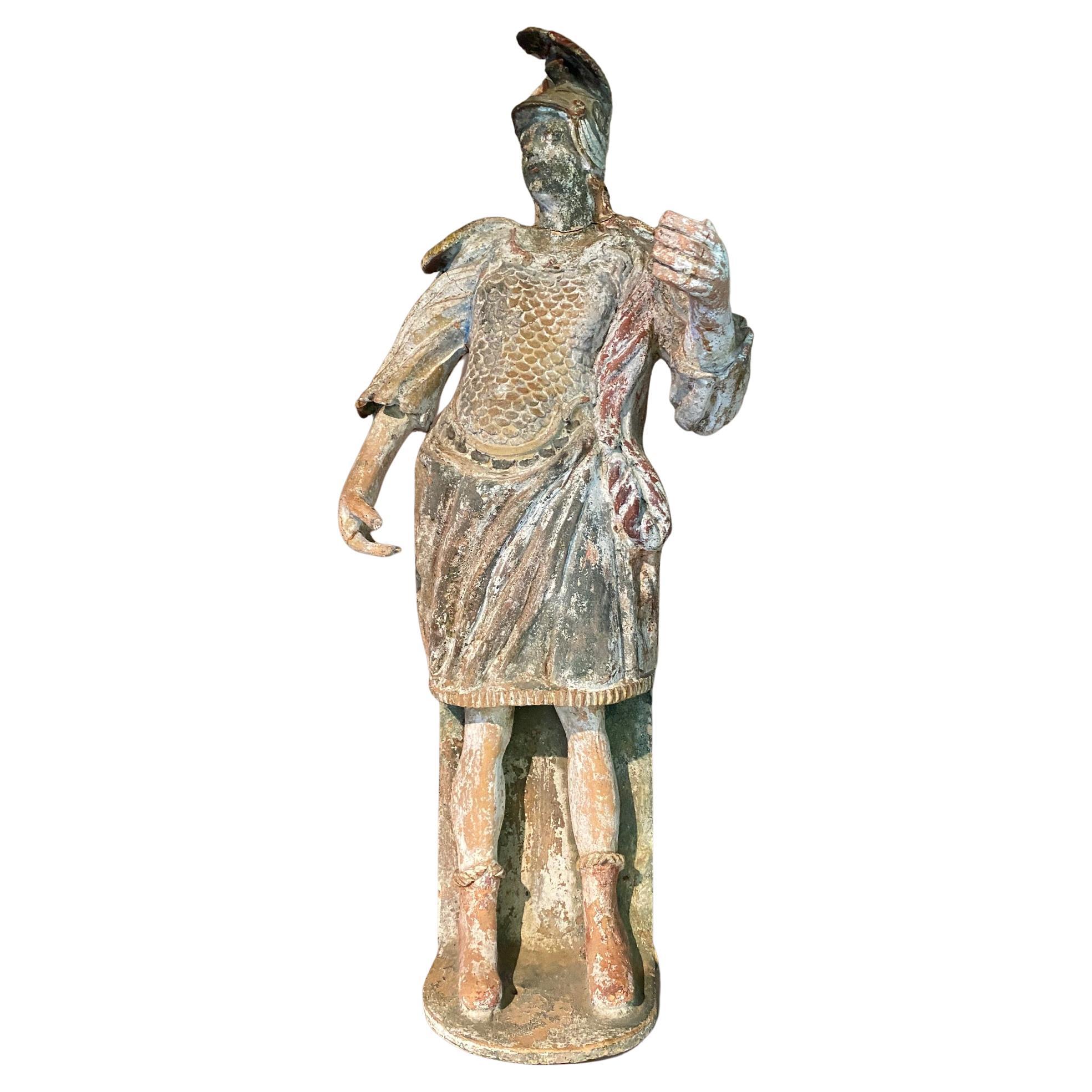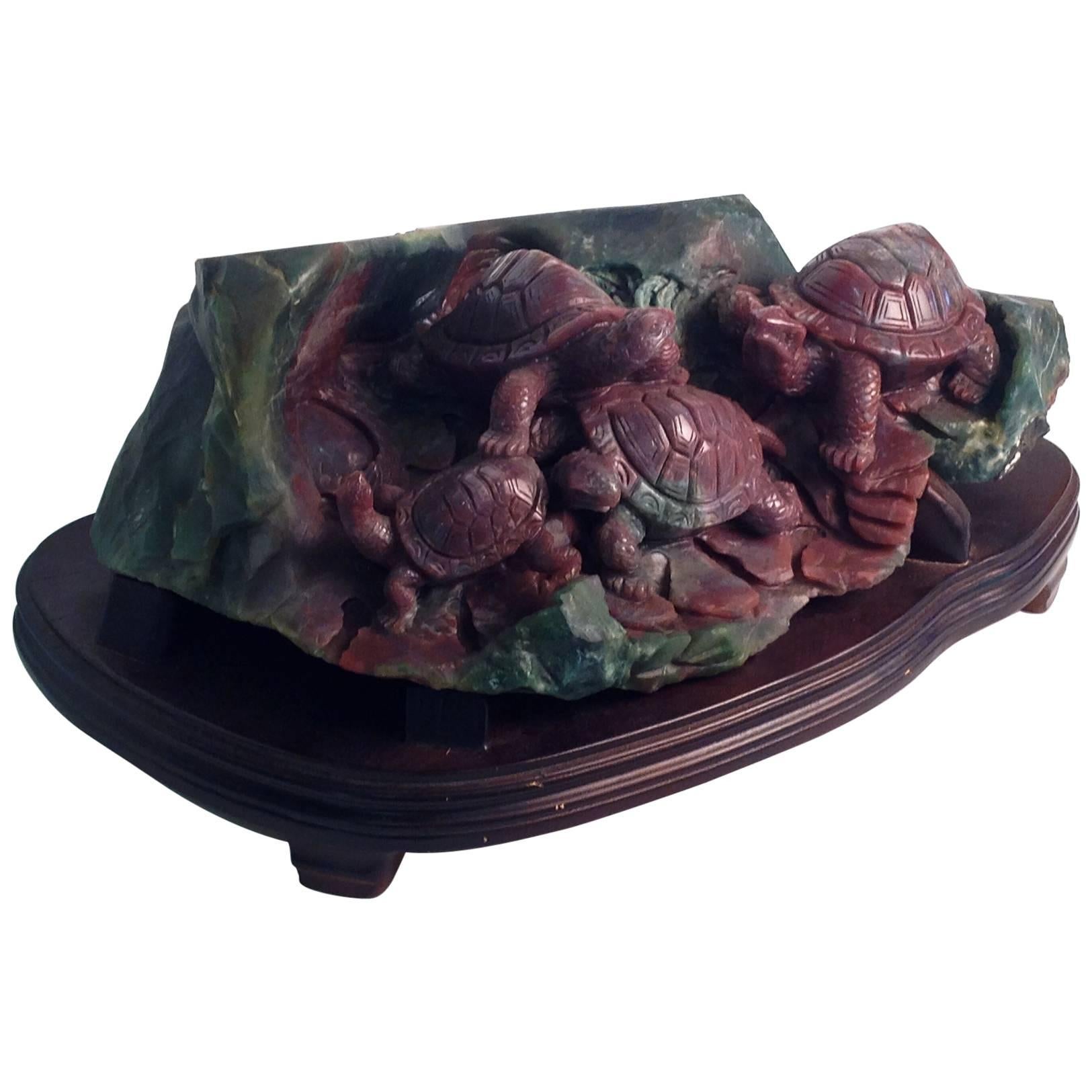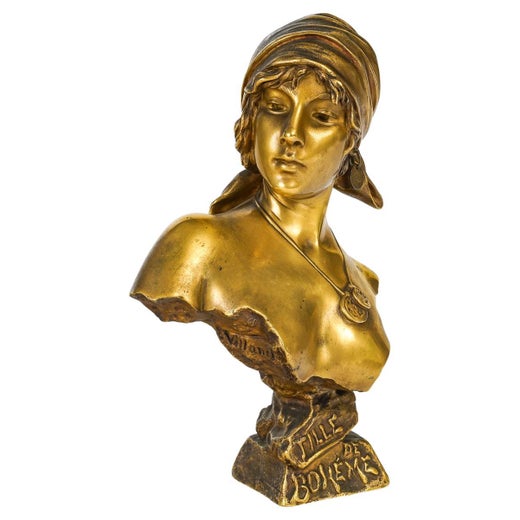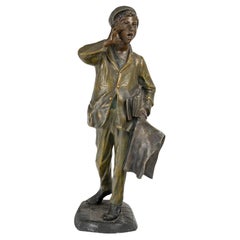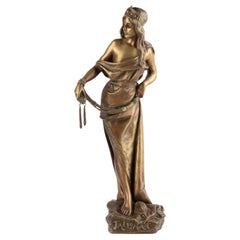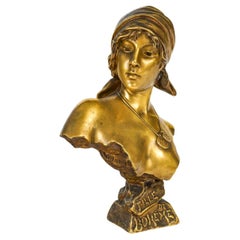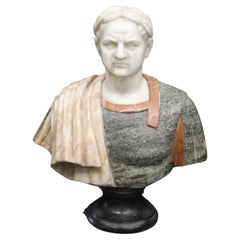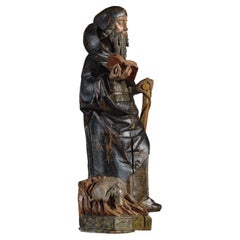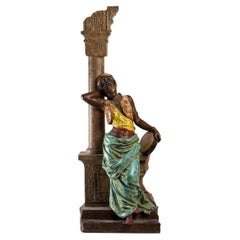
Beautiful Sculpture in Polychrome Regula
View Similar Items
Want more images or videos?
Request additional images or videos from the seller
1 of 8
Beautiful Sculpture in Polychrome Regula
About the Item
- Creator:Emmanuel Villanis (Artist)
- Dimensions:Height: 39.38 in (100 cm)Width: 14.18 in (36 cm)Depth: 11.82 in (30 cm)
- Style:Napoleon III (Of the Period)
- Materials and Techniques:
- Place of Origin:
- Period:
- Date of Manufacture:1870-1890
- Condition:Wear consistent with age and use.
- Seller Location:Saint-Ouen, FR
- Reference Number:1stDibs: LU1530226021282
Emmanuel Villanis
Emmanuel Villanis (b. 1858 d. 1914). Originally from Lille, France and of Italian descent, the artist studied in Turin at the Accademia Albertina, under master sculptor Odoardo Tabacchi, before settling in Paris in 1885. A prolific producer of busts during his career, he enjoyed international acclaim for his work. He had a penchant for producing bronzes (particularly busts) of beautiful young women, mainly in the Art Nouveau style. During his lifetime he exhibited widely in Paris, Milan, Chicago, New York and Vienna, his bronzes are both beautiful and highly desirable.
About the Seller
4.8
Platinum Seller
These expertly vetted sellers are 1stDibs' most experienced sellers and are rated highest by our customers.
Established in 2003
1stDibs seller since 2015
282 sales on 1stDibs
Typical response time: 1 hour
More From This SellerView All
- Sculpture in Regula Representing a Poulbot, Circa 1900-1920.Located in Saint-Ouen, FRSculpture in regula representing a Poulbot, circa 1900-1920. A regule sculpture of a Poulbot, a newspaper seller, circa 1900-1920, Napoleon III style. h: 53cm, w: 23cm, d: 23cmCategory
20th Century French Napoleon III Figurative Sculptures
MaterialsComposition
- Bronze Sculpture by Emmanuel Villanis, 19th Century.By Emmanuel VillanisLocated in Saint-Ouen, FRBronze sculpture by Emmanuel Villanis, 19th century. Bronze sculpture by Emmanuel Villanis, Napoleon III period, 19th century. Photos:(c)inu.studio_art H: 47cm, W: 18cm, D: 13cmCategory
Antique 19th Century French Napoleon III Figurative Sculptures
MaterialsBronze
- Gilt Bronze Sculpture by Emmanuel Villanis, Early 20th Century.By Emmanuel VillanisLocated in Saint-Ouen, FRGilt bronze sculpture by Emmanuel Villanis, Early 20th Century. An Art Nouveau period sculpture, circa 1900 by Emmanuel Villanis, representing a bust of a young woman, the Bohemian,...Category
Early 20th Century French Art Nouveau Figurative Sculptures
MaterialsBronze
- Large Oriental Jardinière in Regula, Napoleon III Period.Located in Saint-Ouen, FRLarge Oriental jardinière in Regula, Napoleon III period. Large 19th century Napoleon III period Oriental planter in Regula. h: 55cm, w: 60cm, d: 35cmCategory
Antique 19th Century French Napoleon III Planters, Cachepots and Jardini...
MaterialsComposition
- Large Oriental Planter in Regula, Napoleon III Period.Located in Saint-Ouen, FRLarge Oriental planter in Regula, Napoleon III period. An important 19th century Napoleon III period Oriental jardinière in Regula. h: 55cm, w: 60...Category
Antique 19th Century French Napoleon III Planters, Cachepots and Jardini...
MaterialsBronze
- Sculpture by Franz Bergmann in Vienna Bronze, Orientalist.By Franz BergmannLocated in Saint-Ouen, FRSculpture by Franz Bergmann in Vienna Bronze, Orientalist. Sculpture in painted and gilded Vienna bronze, Orientalist, Napoleon III period, by Franz Bergmann, 19th century. Dimensi...Category
Antique 19th Century European Napoleon III Busts
MaterialsBronze
You May Also Like
- Sculpture of emperor in polychrome marble.Roman emperor, marble sculptureLocated in Rome, ITSculpture of emperor in polychrome marble. scultura di imperatore in marmo policromo. Sculpture of emperor in polychrome marble.Roman emperor, marble sculptureCategory
20th Century Italian Busts
MaterialsMarble
- Sculpture in Polychrome Wood Representing Saint Anthony HermitLocated in Saint-Ouen, FRSculpture In Polychrome Wood Representing Saint Anthony Hermit Origin : East of France Period : End of the 15th century Measures: Height : 97 cm Width : 32 cm Depth : 26 cm Polychrome wood The saint is represented by an old, bearded man, dressed in a hooded monk’s habit over the tunic of his religious order. He is stood upright, holding an open book, La Règle des Antonnites, in his right hand. In the other hand, he is holding a staff in the form of the Greek letter tau with a rosary hanging down over it. At his feet lies a pig wearing a small bell around its neck. He rests on his right leg, whilst the left advances forward as if he were about to start walking. His belted tunic, forming several rectilinear pleats, is covered by a habit which is open only at the waist, therefore revealing these pleats. He is also wearing a hooded scapular over his shoulders. His thick hair escapes from under a distinctive hat, forming a collection of finely sculpted ringlets. This fine detail is also applied to the four long ringlets of his superb beard, which sit just below the shorter ones of his moustache. His face is a picture of harmony, with lowered eyes and his small mouth lost amongst the abundance of hair. At his feet on a pedestal of flames, hinting to the fire of Saint Anthony no doubt, a pig trying to scratch its ear. Born in 251 in Upper Egypt, he withdrew into solitude at a very young age. He would have been plagued in the desert with extremely diabolical temptations. He payed a visit to Saint Paul the hermit towards the end of his life. He was the dean of the Thébaïde anchorites, who was miraculously fed by a crow. On the day that Saint Anthony visited, the crow brought two portions of bread in its beak instead of one. Some time after, having learnt of the death of his venerable brother, Saint Anthony went to bury him with the help of two lions. The King of Catalonia pleaded to come and exorcise his posessed wife and children. He left Thébaïde for Barcelona. He appeared at the house of the provost André, bringing him a sow in his mouth, a monstrous piglet born without eyes. André wanted to kill it but Anthony stopped him, telling him that the poor beast wanted to ask for healing, as the King had done for his offspring. He made a sign of the cross on the piglet and it suddenly acquired its sight and the members which it did not have at birth. After which, André, guided by Saint Anthony, exorcised the Queen of Catalonia in the same way whilst she knelt at his feet. Théophile discovered the body of Saint Anthony wrapped in a palm fibre tunic which he had been given by Saint Paul the Hermit. In the Red Sea Desert there are two Coptic, IV century, monasteries which stand next to each other, one dedicated to Saint Anthony, the other to Saint Paul the Hermit. They are the oldest monasteries in the Christian world. The body of the famous hermit was transported to Constantinople and would have been transferred into the abbaye, Saint Antoine-en-Viennois, Dauphine. The Antonnite Order was a charitable order which specialised in treating contagious diseases. The fire of Saint Anthony, was identified by doctors as a grangrenous ergotism, caused by a diet of rye bread contaminated with the parasite ergot. The effect of this is the drying out of hands and feet which then need amputation, the plague and then later syphilis. All the skin diseases came from Saint Anthony. Saint Anthony’s pilgrimage to Dauphine rivaled that of Saint Jacques to Compostela. Thanks to the various commanderies created by the mother house, Saint Anthony’s cult spread throughout Christianity. In order to maintain commanderies and their hospitals, the Antonnites resorted to pig farming. They enjoyed having the benefit of letting their pigs roam freely through the streets of the villages, with little bells round their necks that had a recognisable chime so that they were able to find them. This privilege was very envied by other monastic Orders. Saint Anthony was the patron saint of several crafts such as basket makers and gravediggers. However it is to the pig that he owes the majority of his patronages; pigkeepers, pig sellers, butchers, porc butchers, brush makers who use pig bristle and bell-ringers because of the pig bells...Category
Antique 15th Century and Earlier Figurative Sculptures
MaterialsWood
- Beautiful Zoisite SculptureLocated in Milan, ItalyA beautiful zoisite sculpture produced in China. Italian private collection.Category
20th Century Chinese Figurative Sculptures
MaterialsCast Stone
- Beautiful Bronze SculptureLocated in St.Petersburg, FLAn interesting and elegant bronze sculpture, unsigned. In the style of Harry Bertoia or John Risley.Category
Vintage 1950s American Mid-Century Modern Abstract Sculptures
MaterialsBronze
- Base for sculpture. Polychromed wood.Located in Madrid, ESGallon base. Carved and polychrome wood. Inspired by models from the 17th century. Rectangular base with a similar cushion on the top (decorated with plant elements) and complex line...Category
21st Century and Contemporary Spanish Baroque Figurative Sculptures
MaterialsOther
- Paul Evans Polychromed Steel SculptureBy Paul EvansLocated in New York, NYAstonishing brutalist sculpture by Paul Evans, circa 1960's. Welded and polychromed steel, painted wood. 67 x 38 x 26 in. (170.2 x 96.5 x 66 cm) excluding base.Category
Vintage 1960s American Brutalist Abstract Sculptures
MaterialsSteel
Recently Viewed
View AllMore Ways To Browse
E Villanis
Bronze Mythical
Adler Jonathan
Germany Deco Porcelain
Rest Egypt
Gold Drapery
Womans Bronze Head
Mid Century Modern Ceramic Figure
French Art Deco Sculpture Woman
Black Oval Sculpture
Old Carved Head Sculpture
Austrian Art Deco Bronze Sculptures
Antique Bronze Sculpture Heads
Deco Wood Figure
Barbedienne Signed Bronze
Hand Made Wooden Figure
Antique Hand Of God
Rome 1870
